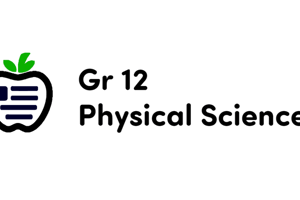Podcast
Questions and Answers
What is a common characteristic of the accidental discoveries of synthetics?
What is a common characteristic of the accidental discoveries of synthetics?
- They were all made by the same chemist
- They were all discovered in the same decade
- They were all discovered by accident (correct)
- They were all planned experiments
What is the main building block of a polymer?
What is the main building block of a polymer?
- Monomer (correct)
- Ion
- Molecule
- Atom
Which of the following is a natural material that contains polymers?
Which of the following is a natural material that contains polymers?
- Glass
- Metal
- Ceramic
- Wool (correct)
What is a common property of polymers?
What is a common property of polymers?
What is an advantage of synthetic fibers?
What is an advantage of synthetic fibers?
What is the definition of a physical change?
What is the definition of a physical change?
What is a type of synthetic food?
What is a type of synthetic food?
What is a reactant?
What is a reactant?
What is characteristic of an endothermic reaction?
What is characteristic of an endothermic reaction?
What is an example of an endothermic reaction?
What is an example of an endothermic reaction?
What is a factor that affects the rate of a reaction?
What is a factor that affects the rate of a reaction?
What is an example of a chemical change?
What is an example of a chemical change?
What is a characteristic of a synthetic material?
What is a characteristic of a synthetic material?
What is an example of an exothermic reaction?
What is an example of an exothermic reaction?
What is a characteristic of a natural resource?
What is a characteristic of a natural resource?
What is the effect of increasing the surface area on the rate of a reaction?
What is the effect of increasing the surface area on the rate of a reaction?
Flashcards
Physical Change
Physical Change
Alters form/appearance, but doesn't change the substance.
Chemical Change
Chemical Change
Produces one or more NEW substances.
Reactants
Reactants
Undergo changes during a chemical reaction.
Products
Products
Signup and view all the flashcards
Exothermic Reaction
Exothermic Reaction
Signup and view all the flashcards
Endothermic Reaction
Endothermic Reaction
Signup and view all the flashcards
Indications of Chemical Reaction
Indications of Chemical Reaction
Signup and view all the flashcards
Catalyst
Catalyst
Signup and view all the flashcards
Inhibitor
Inhibitor
Signup and view all the flashcards
Synthetic Material
Synthetic Material
Signup and view all the flashcards
Natural Resource
Natural Resource
Signup and view all the flashcards
Pure Substance
Pure Substance
Signup and view all the flashcards
Polymer
Polymer
Signup and view all the flashcards
Synthetic Fiber Types
Synthetic Fiber Types
Signup and view all the flashcards
Synthetic Food Types
Synthetic Food Types
Signup and view all the flashcards
Study Notes
Physical and Chemical Changes
- Physical change: alters the form or appearance of a substance without changing it into a different substance
- Examples: cutting, crushing, melting, freezing, boiling
Chemical Changes
- Chemical change: produces one or more new substances
- Examples: burning, rusting, cooking, digestion, decomposition
Reactants and Products
- Reactants: substances that undergo chemical changes
- Products: substances formed as a result of a chemical reaction
Exothermic and Endothermic Reactions
- Exothermic reaction: energy released as products form is greater than energy required to break bonds of reactants
- Feels warm
- Examples: campfire, nuclear fission
- Endothermic reaction: more energy required to break bonds of reactants than is released by formation of products
- Feels cold
- Examples: melting ice, photosynthesis
Indicators of Chemical Reaction
- Changes that indicate a chemical reaction took place:
- Color change
- Odor change
- Gas production
- Formation of a precipitate
Factors Affecting Rate of Reaction
- Five factors that affect the rate of a reaction:
- Temperature: increasing temperature increases rate of reaction
- Surface area: increasing surface area increases rate of reaction
- Catalysts: substances that speed up a chemical reaction
- Inhibitors: substances that slow down reactions
Synthetic Materials and Natural Resources
- Synthetic material: chemicals and resources made by humans
- Examples: nylon, spandex, rayon
- Natural resource: anything naturally occurring in the environment that humans use
- Examples: pure elements, simple molecules, complex molecules
Pure Substances
- Characteristics of pure substances:
- Same type of atom
- Same molecules
- Same ionically bonded elements
- Examples: pure elements, simple molecules, complex molecules
Accidental Discoveries of Synthetics
- Three accidental discoveries of synthetics:
- Superglue: cyanoacrylate that stuck to everything
- Non-stick coating: white flakes in a container instead of gas
- Artificial sweetener: forgetting to wash hands before eating
Polymers
- Polymer: long chains of molecules made up of repeating units called monomers
- Natural occurrence of polymers:
- Wool
- Silk
- Rubber
- Cellulose
- Properties of polymers:
- Strength
- Flexibility
- Elasticity
Synthetic Fibers
- Four types of synthetic fibers:
- Acrylic
- Nylon
- Polyester
- Spandex
- Four advantages of synthetic fibers:
- Less expensive
- Last longer
- Dry more quickly
- Clean easily
- Strong and flexible
- Three drawbacks of synthetic fibers:
- Burn more easily
- Pollutants
- Can cause allergies
- Four ways in which synthetic fibers are used:
- Clothes
- Buildings
- Materials for goods
- Plastics
Synthetic Foods
- Three types of synthetic foods:
- Flavorings
- Colorings
- Preservatives
- Four advantages of synthetic foods:
- Cheaper
- Foods last longer
- Safer to consume
- Obtain in a large scale
- One drawback of synthetic foods:
- Health risks
Studying That Suits You
Use AI to generate personalized quizzes and flashcards to suit your learning preferences.




